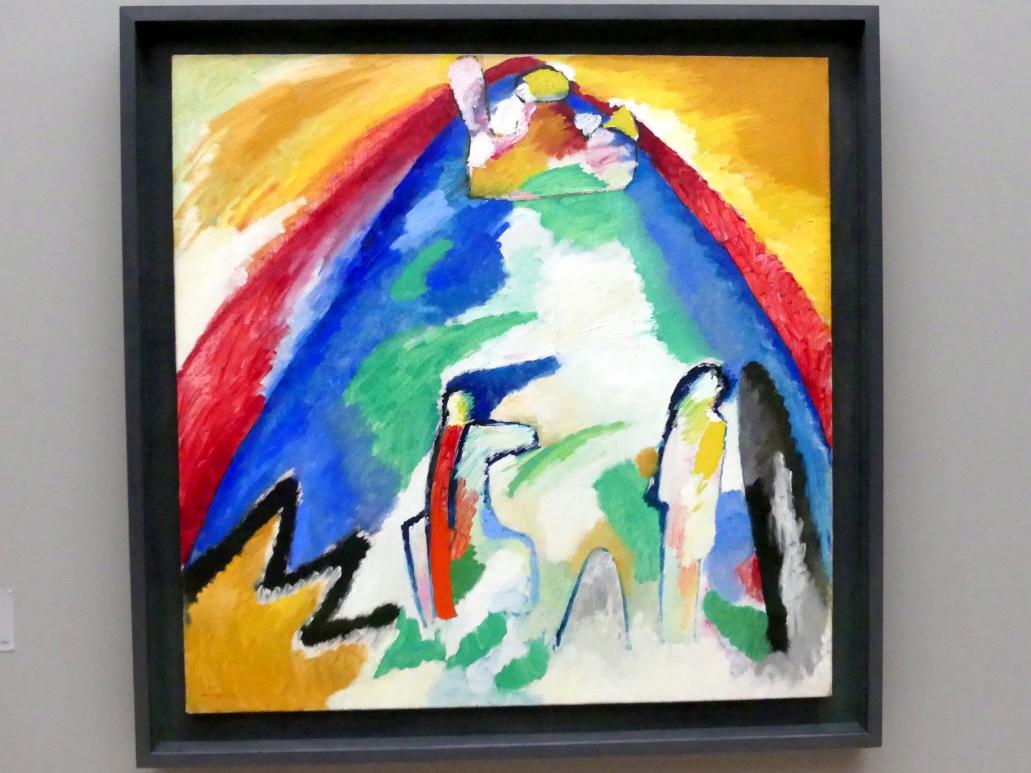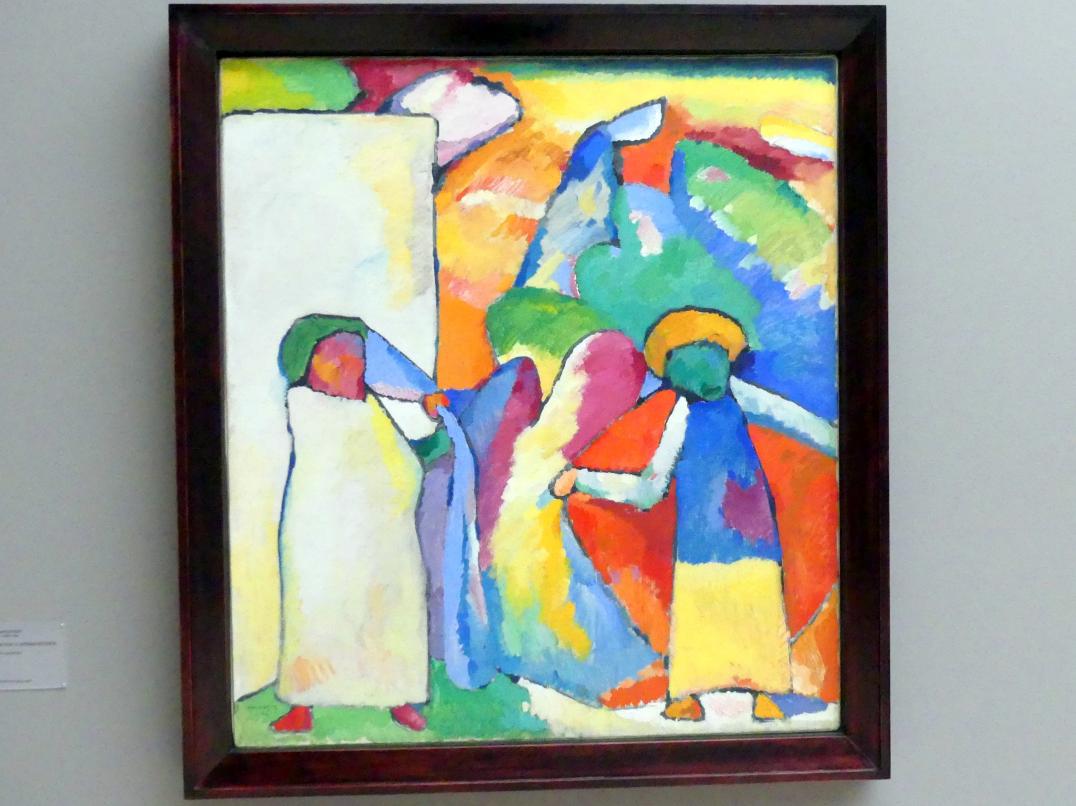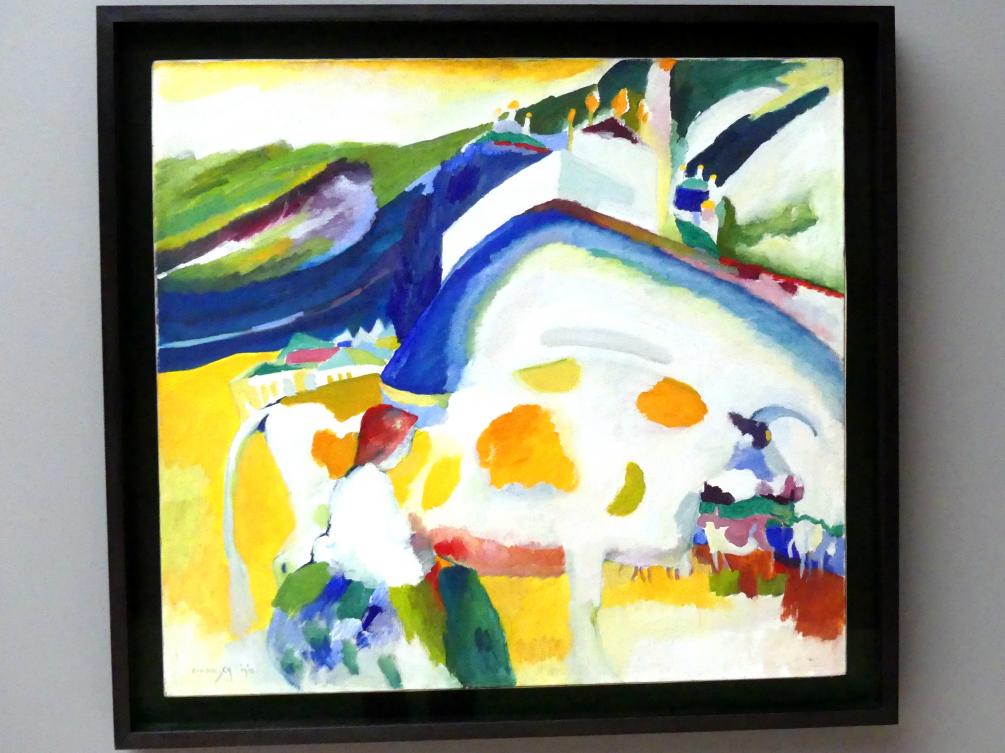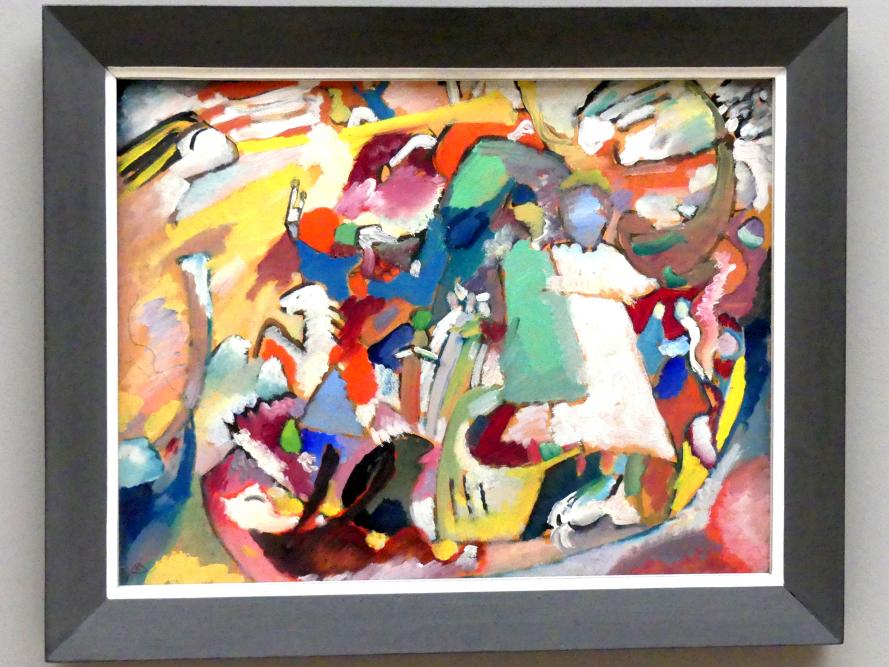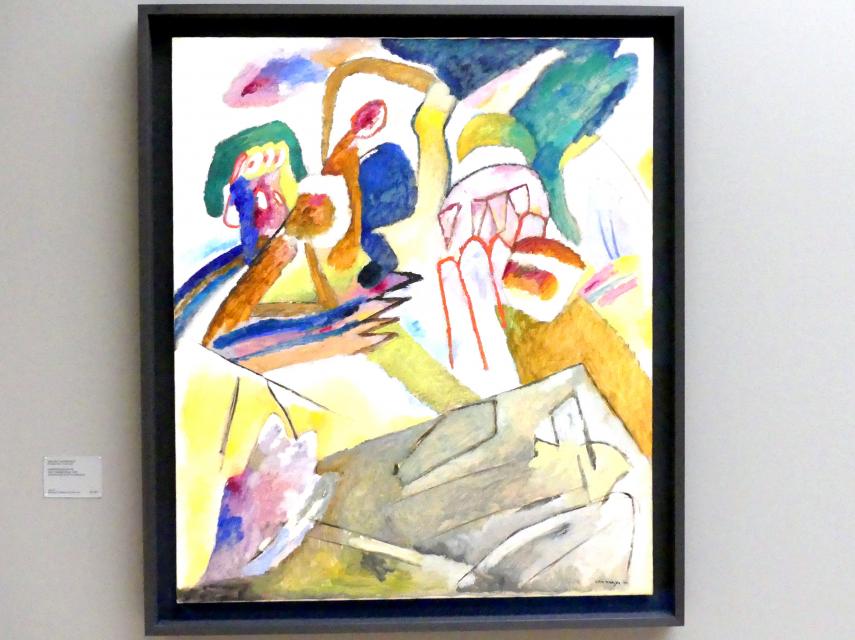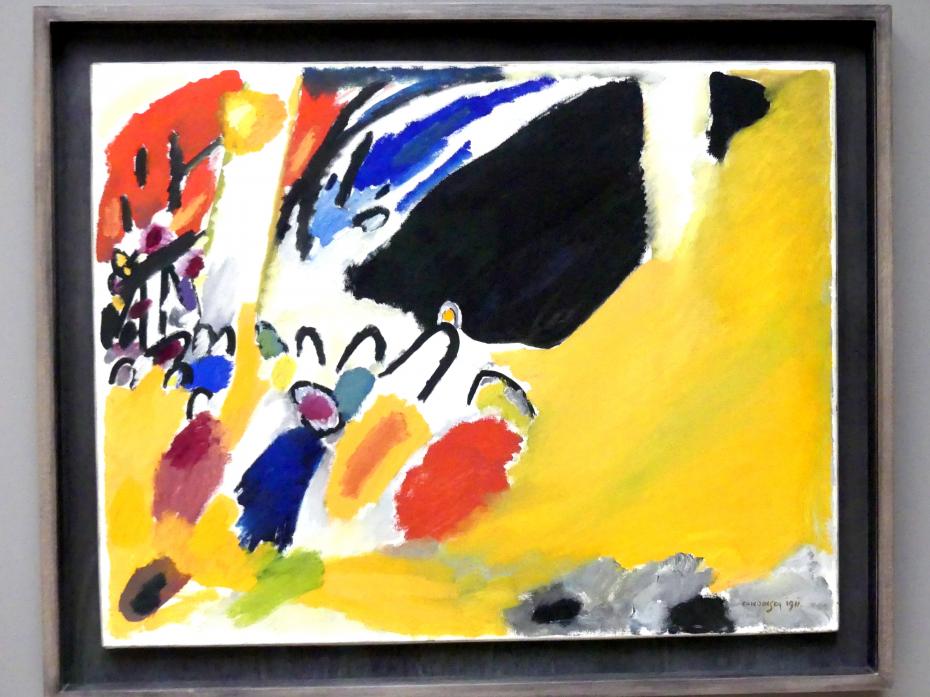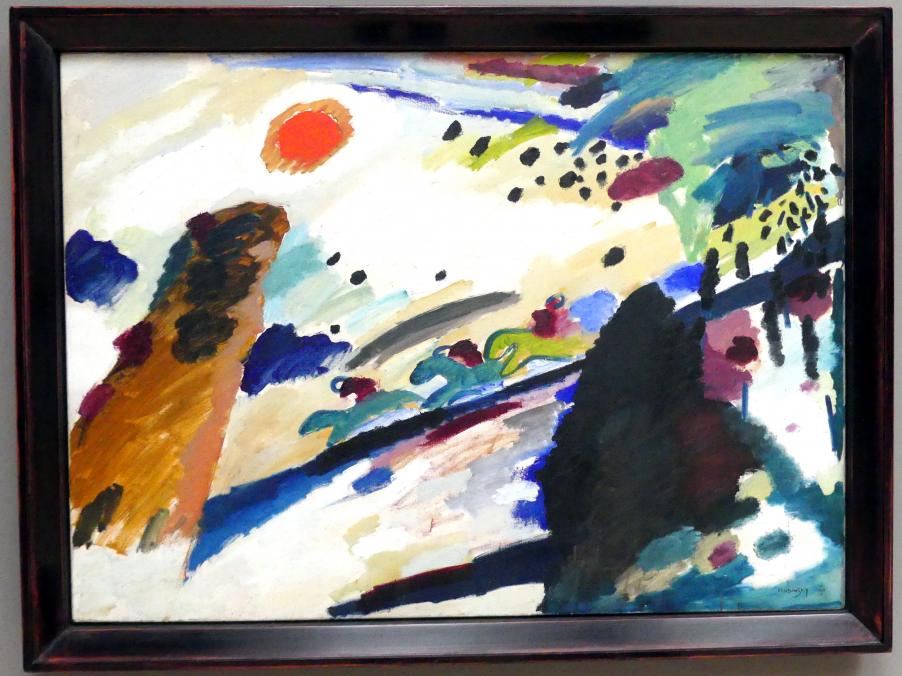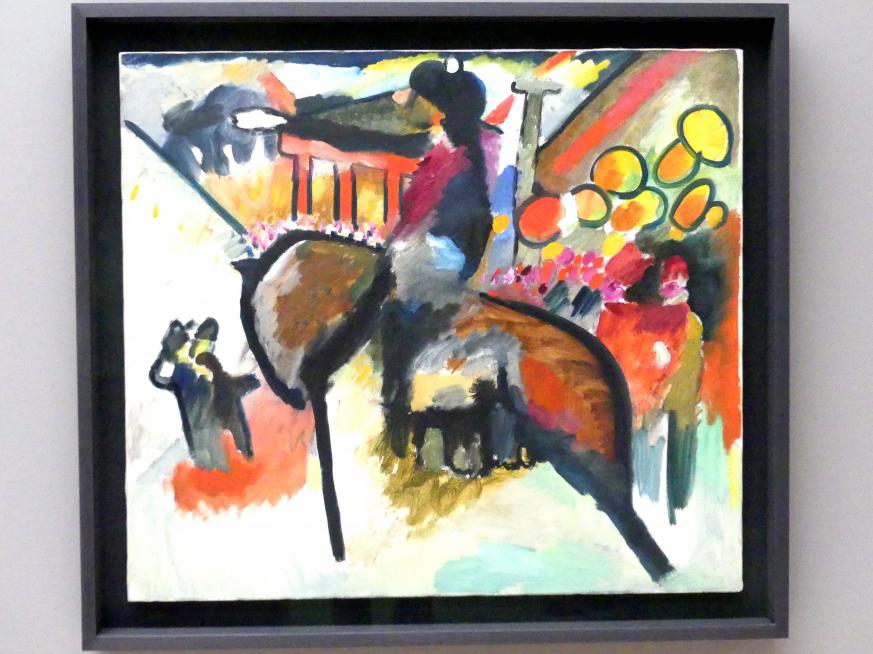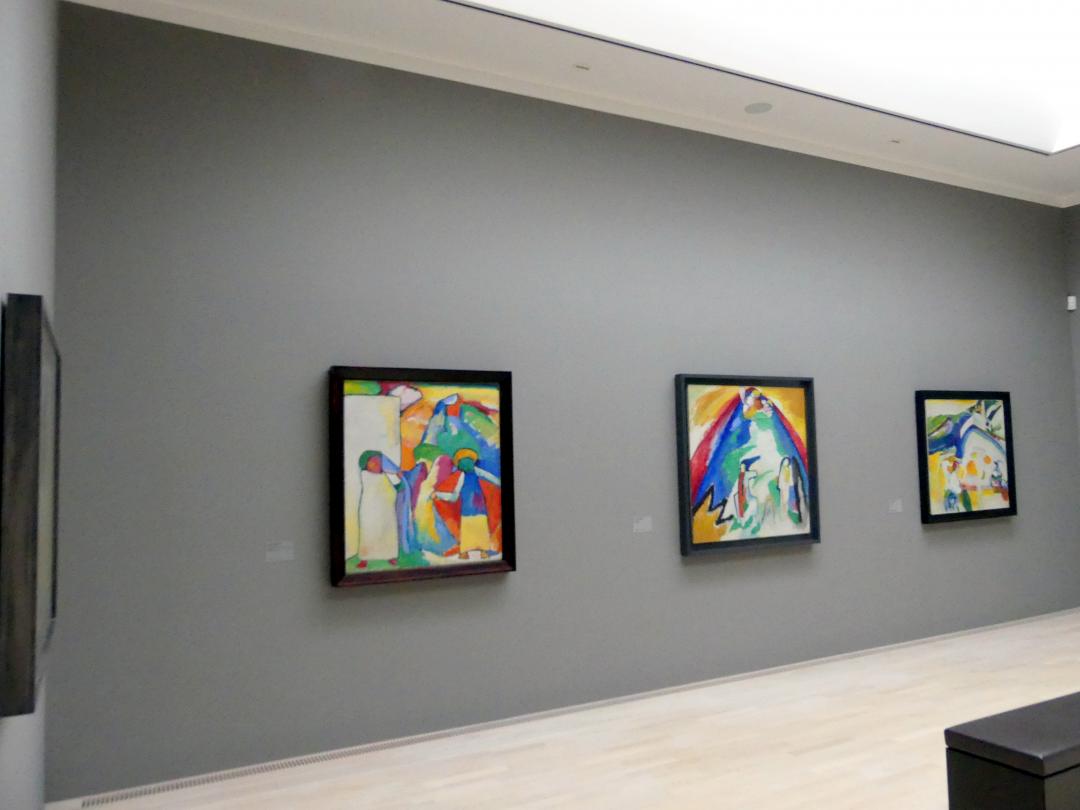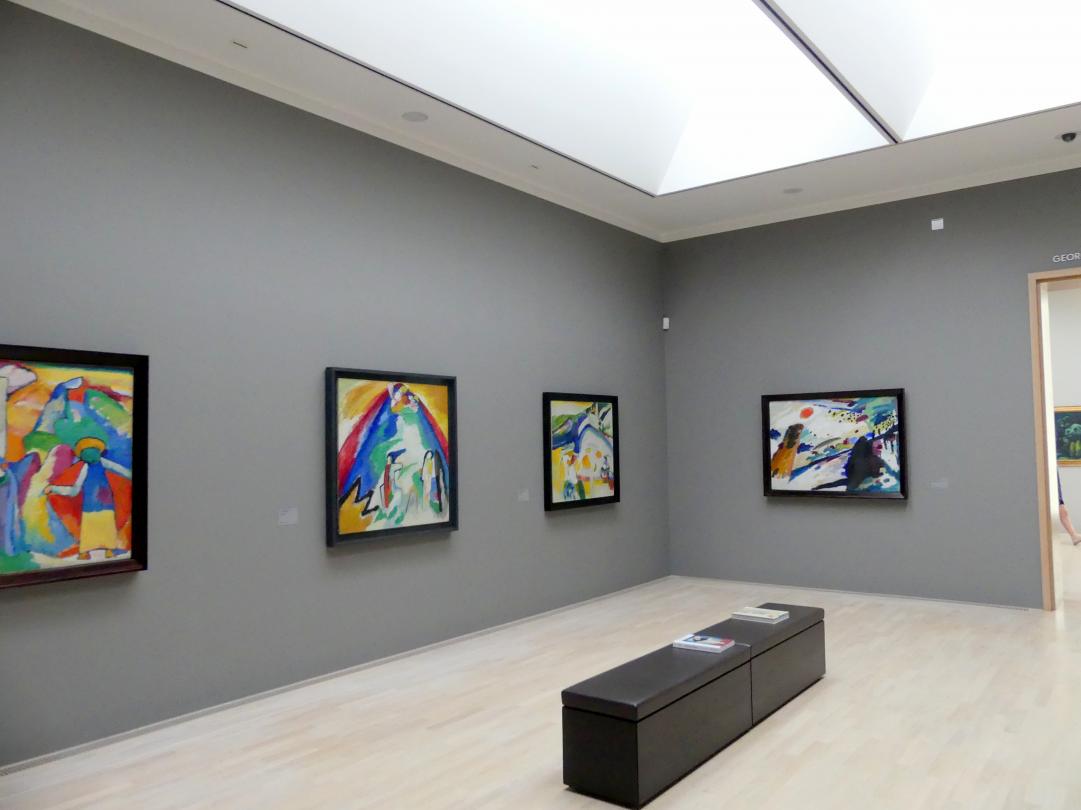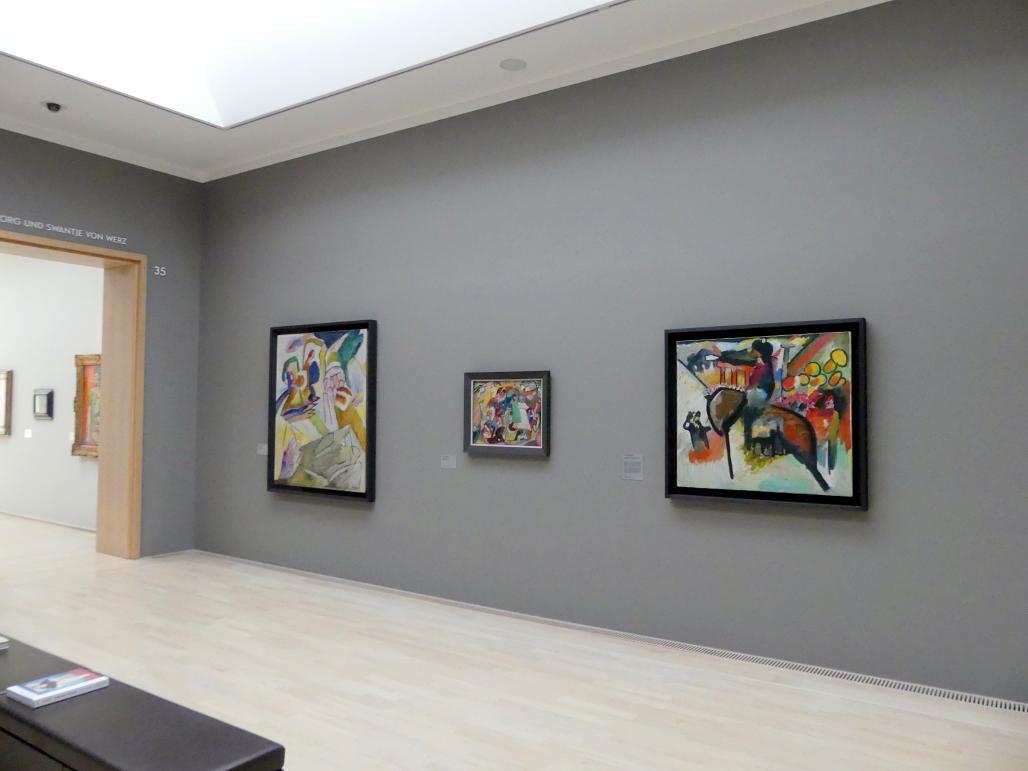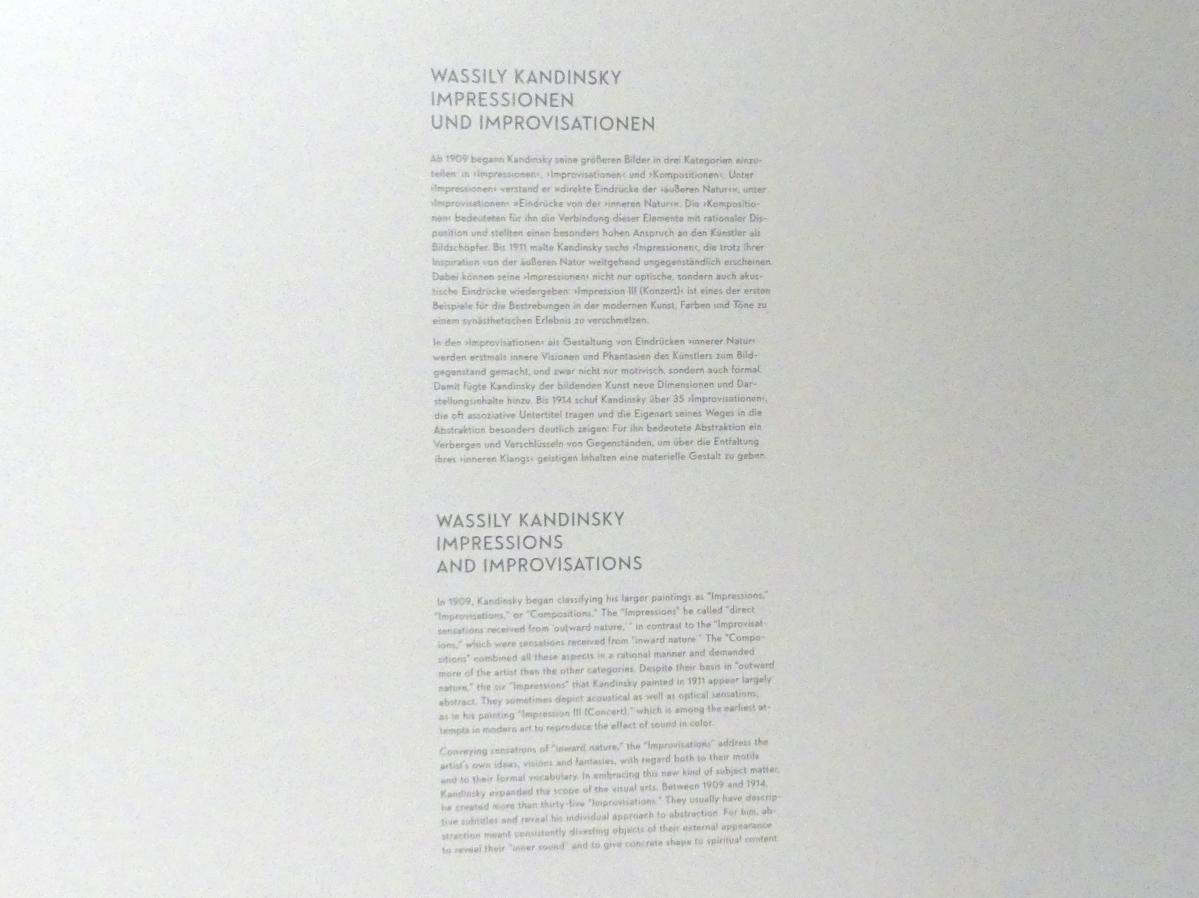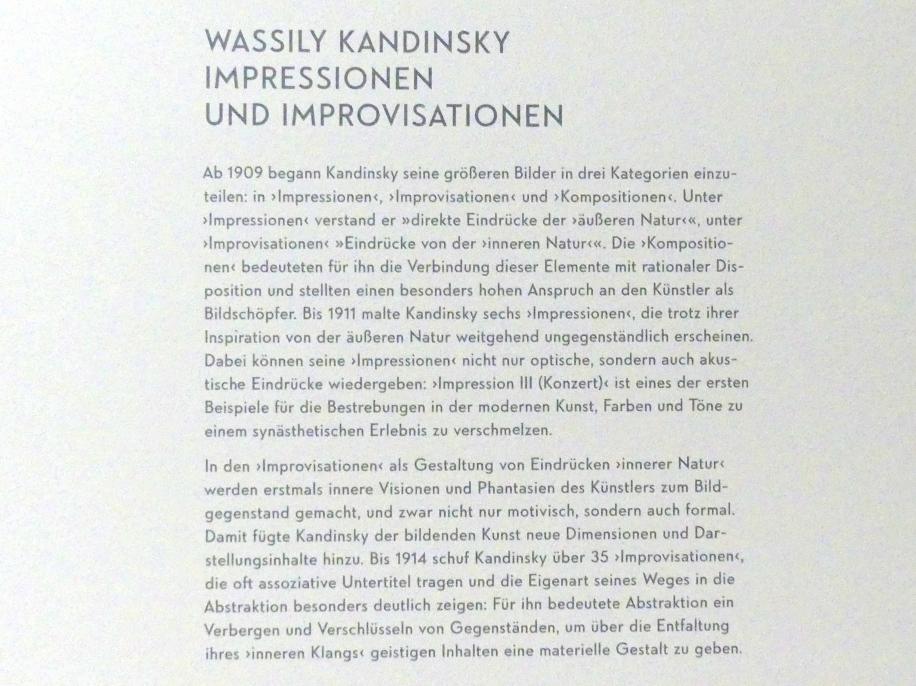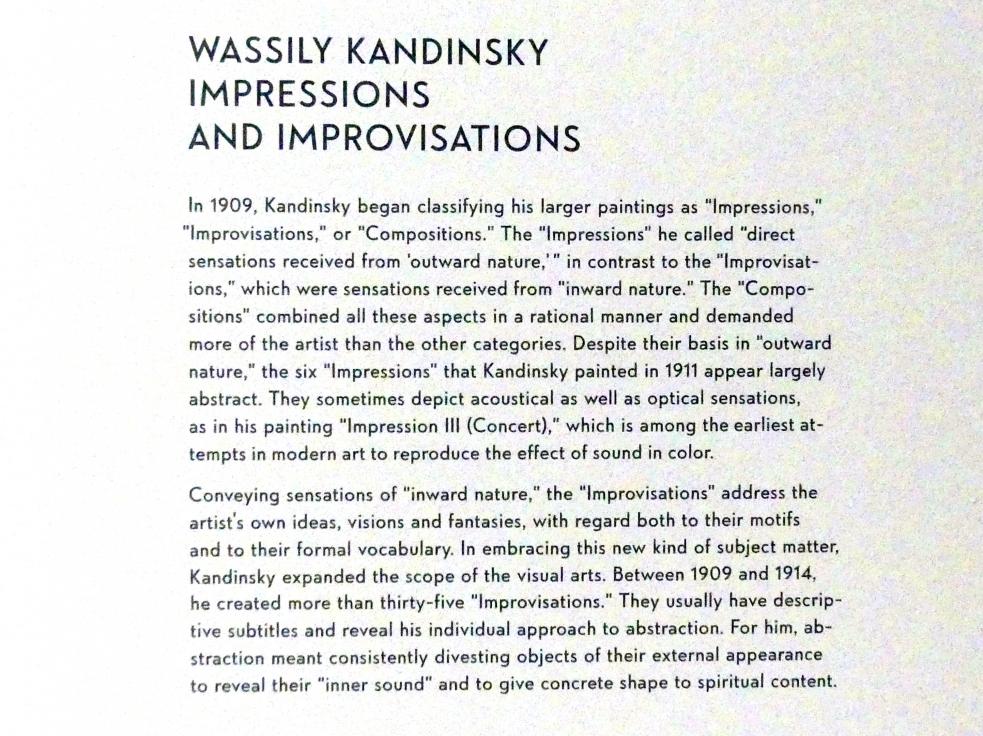WASSILY KANDINSKY
IMPRESSIONEN UND IMPROVISATIONEN
Ab 1909 begann Kandinsky seine größeren Bilder in drei Kategorien einzuteilen: in >Impressionen<, >Improvisationen< und >Kompositionen<. Unter >Impressionen< verstand er "direkte Eindrücke der >äußeren Natur<", unter >Improvisationen< "Eindrücke von der >inneren Natur<". Die >Kompositionen< bedeuteten für ihn die Verbindung dieser Elemente mit rationaler Disposition und stellten einen besonders hohen Anspruch an den Künstler als Bildschöpfer. Bis 1911 malte Kandinsky sechs >Impressionen<, die trotz ihrer Inspiration von der äußeren Natur weitgehend ungegenständlich erscheinen. Dabei können seine >Impressionen< nicht nur optische, sondern auch akustische Eindrücke wiedergeben: >Impression III (Konzert)< ist eines der ersten Beispiele für die Bestrebungen in der modernen Kunst, Farben und Töne zu einem synästhetischen Erlebnis zu verschmelzen.
In den >Improvisationen< als Gestaltung von Eindrücken >innerer Natur< werden erstmals innere Visionen und Phantasien des Künstlers zum Bildgegenstand gemacht, und zwar nicht nur motivisch, sondern auch formal. Damit fügte Kandinsky der bildenden Kunst neue Dimensionen und Darstellungsinhalte hinzu. Bis 1914 schuf Kandinsky über 35 >Improvisationen<, die oft assoziative Untertitel tragen und die Eigenart seines Weges in die Abstraktion besonders deutlich zeigen: Für ihn bedeutete Abstraktion ein Verbergen und Verschlüsseln von Gegenständen, um über die Entfaltung ihres inneren Klangs geistigen Inhalten eine materielle Gestalt zu geben.
WASSILY KANDINSKY
IMPRESSIONS AND IMPROVISATIONS
In 1909, Kandinsky began classifying his larger paintings as "Impressions", "Improvisations", or "Compositions". The "Impressions" he called "direct sensations received from 'outward nature'", in contrast to the "Improvisations", which were sensations received from "inward nature". The "Compositions" combined all these aspects in a rational manner and demanded more of the artist than the other categories. Despite their basis in "outward nature," the six "Impressions" that Kandinsky painted in 1911 appear largely abstract. They sometimes depict acoustical as well as optical sensations, as in his painting "Impression III (Concert)", which is among the earliest at tempts in modern art to reproduce the effect of sound in color.
Conveying sensations of "inward nature," the "Improvisations" address the artist's own ideas, visions and fantasies, with regard both to their motifs and to their formal vocabulary. In embracing this new kind of subject matter, Kandinsky expanded the scope of the visual arts. Between 1909 and 1914, he created more than thirty-five "Improvisations". They usually have descriptive subtitles and reveal his individual approach to abstraction. For him, abstraction meant consistently divesting objects of their external appearance to reveal their "inner sound" and to give concrete shape to spiritual content.
